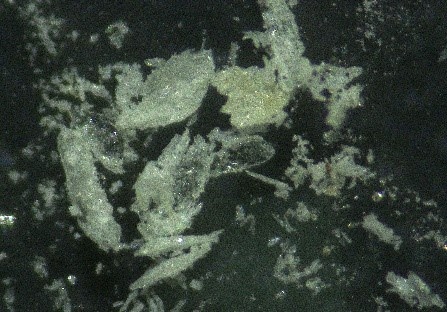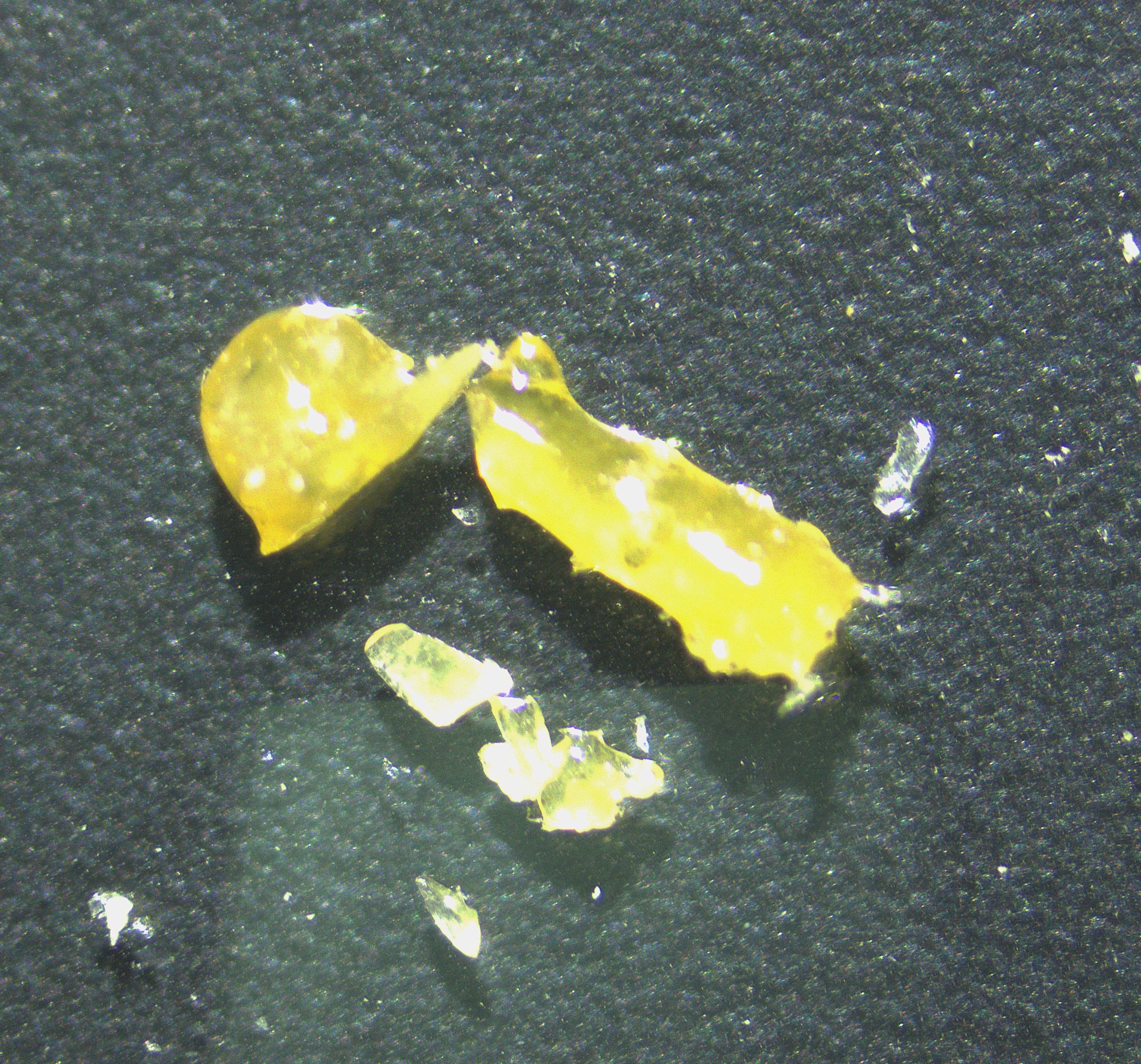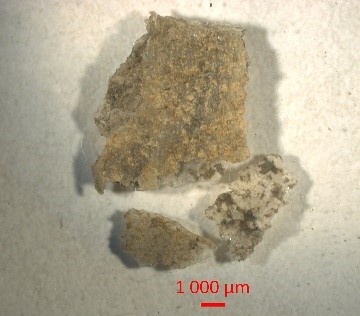Report on the restoration of Nikolai Gustavovich Shilder’s
Portrait of Emperor Alexander III

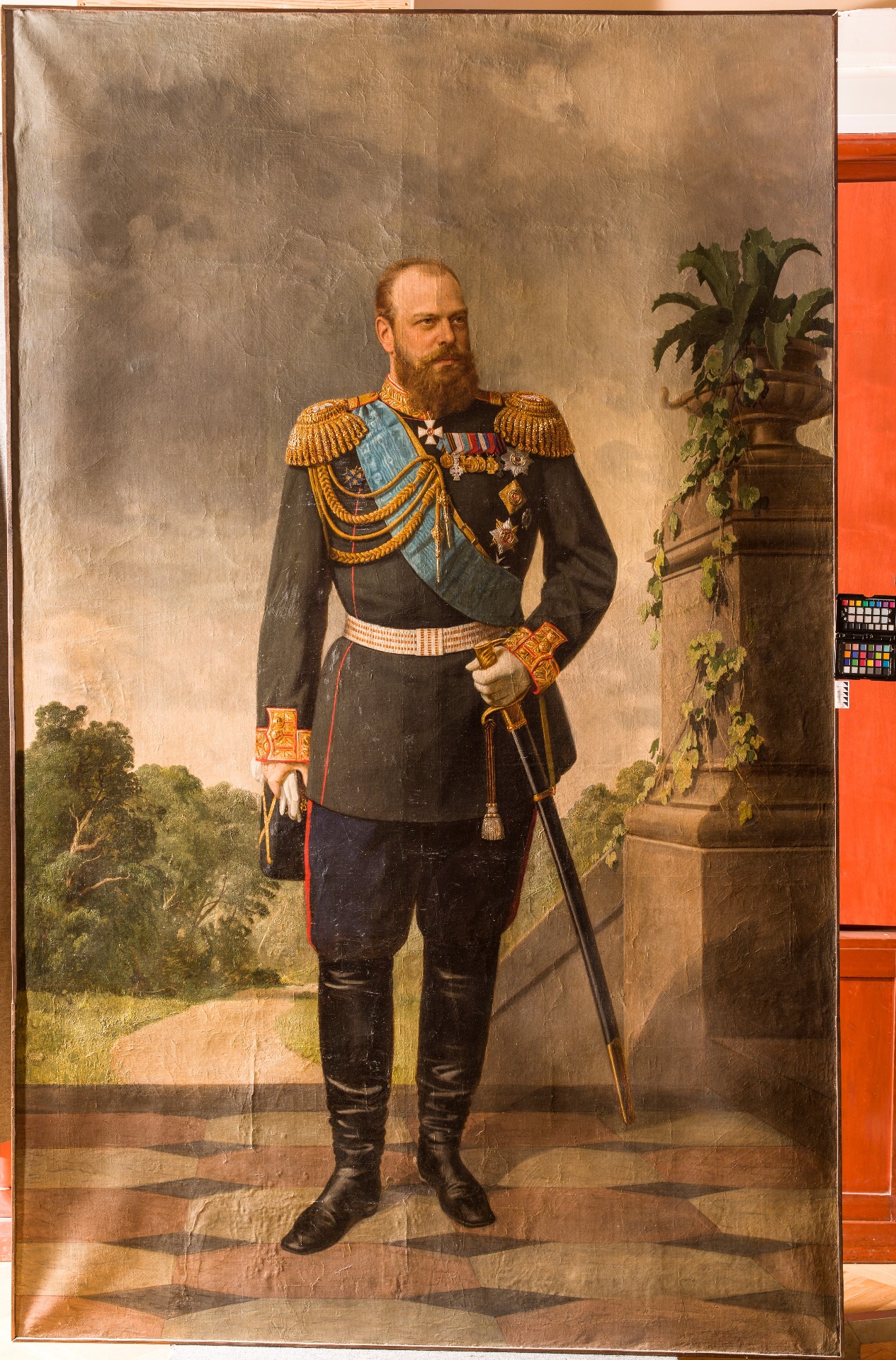
State of preservation before restoration
The stretcher is not fit for further use: it is deformed from uneven tensioning of the canvas, has come badly unwedged and has bars that are insufficiently wide or thick to support a large-format painting. The picture has been lined with a second canvas. The bond between the two supports is unsatisfactory, with numerous extensive areas of separation around the edges. The canvas has a pronounced sag and numerous deformations of various sort: deformations in the corners in the form of folds, the inner edges of the stretcher have become imprinted, indentations following the network of craquelure in the primer, the oulines of old restored tears and losses in the support with uneven edges fixed during the lining process, indents and bulges, isolated area of rigid buckling of the original canvas fixed during the lining process. The old tears and losses in the support have been broadly covered with restoration primer and tinting. The adhesion between the primer and support is unsatisfactory. In some sections of the lower part of the painting there are small area with open cleavage standing out from the surface. Across the whole surface of the picture there are bulges in the primer following the network of craquelure and fractures with sharp edges. Losses of primer are indicated by minor flaking, chiefly following the lines of cleavages and bulges. Across the old tears and losses in the support, cleavages, bulges and losses of primer there are numerous areas of restoration retouching that have altered in colour and tone, stand out in relief and broadly cover the artist’s own paintwork. The painting is coated with restoration varnish that has yellowed, and is uneven in colour, lustre and thickness, applied by aerosol with numerous clots, patches, runs and sputters on the sites of restoration retouching.
Technical and technological studies
Investigation of the organic components of the adhesive used for lining and the covering varnish was carried out on an Agilent 7890 B/5977 gas chromatograph/mass spectrometer. The restoration varnish was found to be a mixture of acrylic resin (poly-isobutyl methacrylate – around 79%) and alkyd resin. The lining adhesive is made up of two layers. The lower one is a mixture of alkyds with polyvinyl phthalate (around 47%), oil (around 20%), and rosin (around 33%). The top layer comprises a mixture of alkyds with polyvinyl phthalate (about 24%), oil (about 33%) and a very small amount of hide-and-bone glue.
Examination of the luminescence of the picture’s surface under ultraviolet light. The luminescence of the coat of varnish is uneven across the whole surface, varying in colour and intensity. The upper restoration layer of varnish has a bluish shade of luminescence, intensely sky blue where the clots and patches are. The upper layer of varnish covers numerous restoration retouchings. Some were made over the layer of varnish and have no luminescence. The lower layer of varnish has a greenish luminescence that shows through in areas with a thin coat of the upper varnish.
Restoration measures
- Photographic recording of all restoration processes
- Reinforcement of the primer and paint layer; elimination of the deformations in the support
- Removal of the lining of the painting
- Removal of the lining adhesive from the back of the original canvas
- Preparation of a new lining canvas
- Preparation of a new stretcher suitable for display purposes
- Lining the painting with the new canvas
- Fitting the painting on the new stretcher
- Restoration of the transparency of the varnish coating
- Using a tailored method to remove the restoration varnish across the entire surface of the portrait
- Using a tailored method to remove overpainting across the entire surface of the portrait
- Correction of the old restoration infilling
- Covering the painting with restoration varnish
- Retouching the losses in the paint layer
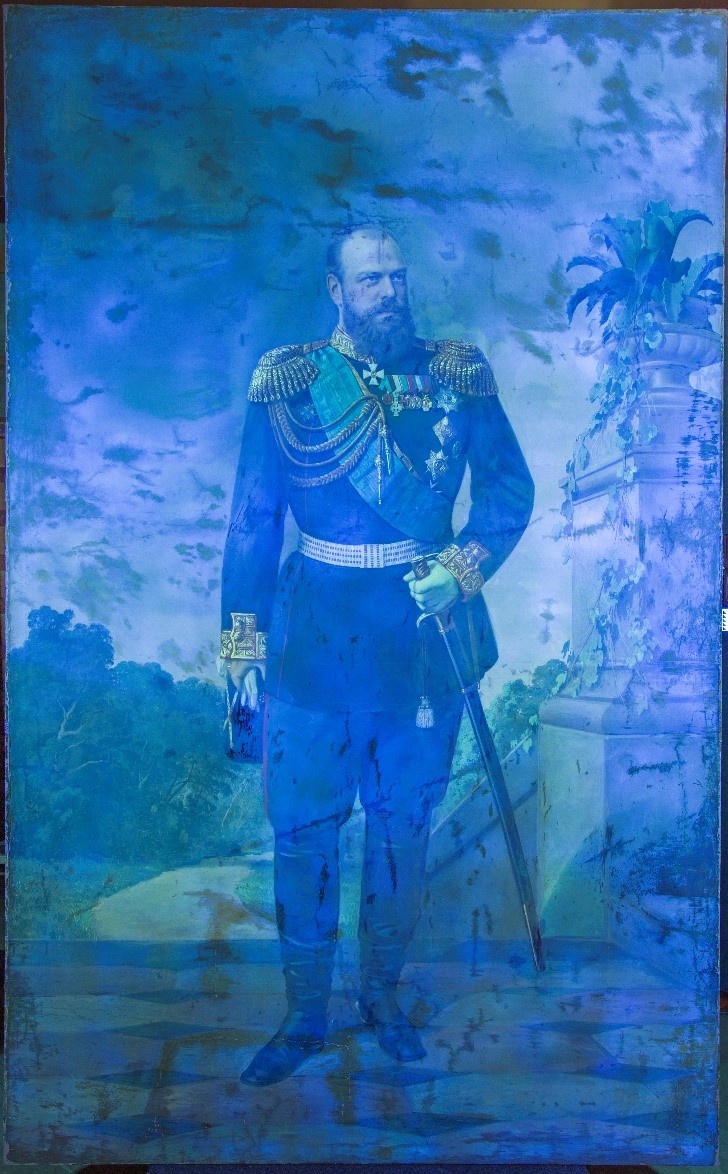 Photograph of the visible luminescence of the surface under ultraviolet illumination (before restoration).
Photograph of the visible luminescence of the surface under ultraviolet illumination (before restoration).
A working group has been formed from the staff of the State Hermitage for the restoration of this painting:
- Scholarly supervisor – Yury Gudymenko
- Co-ordinator – Yevgeny Feodorov, head of the Project Finance Sector
- Curator – Victor Korobov
- Artist-Restorers – Andrei Andreyev, Alexander Vinogradov, Sergei Kiselev
